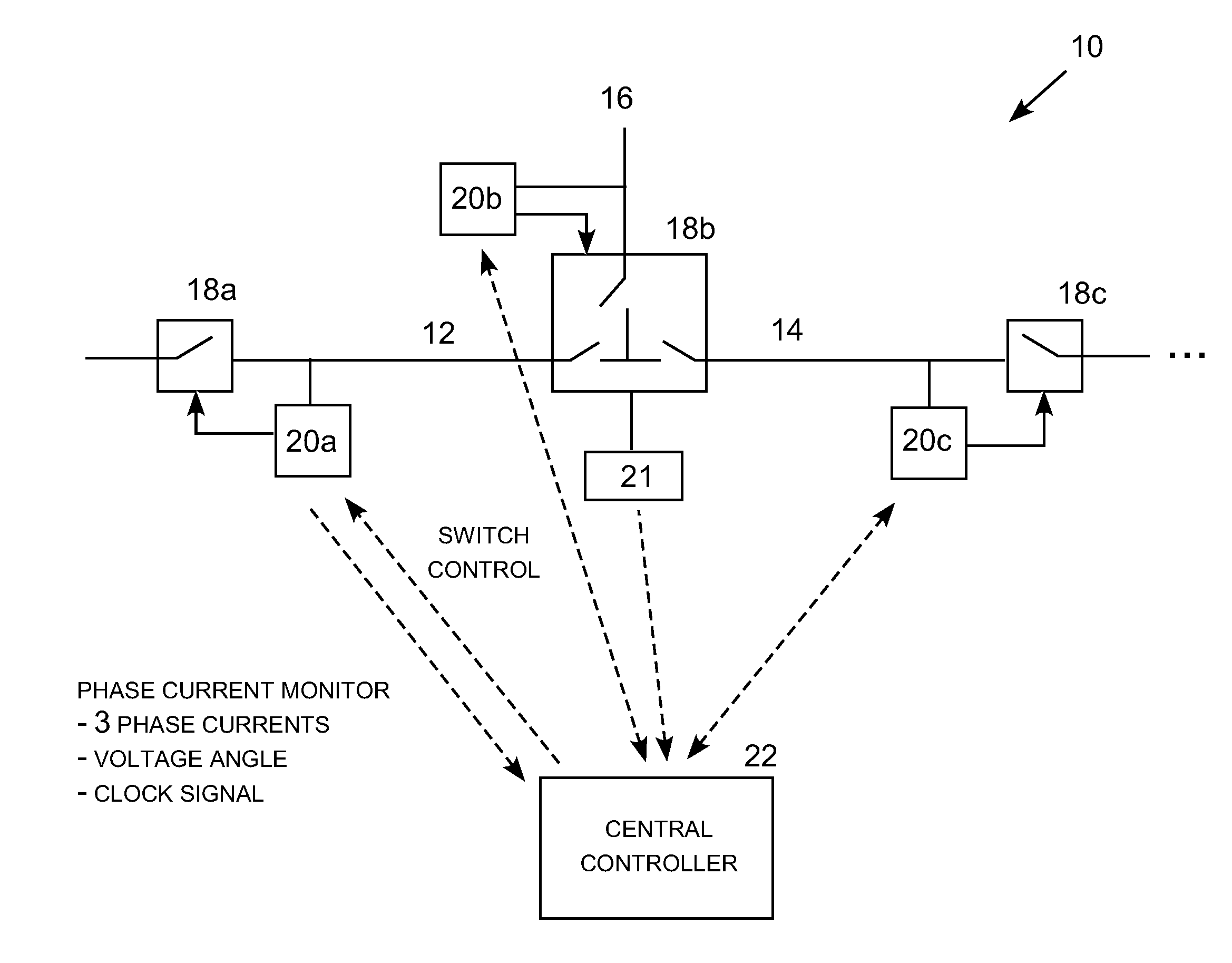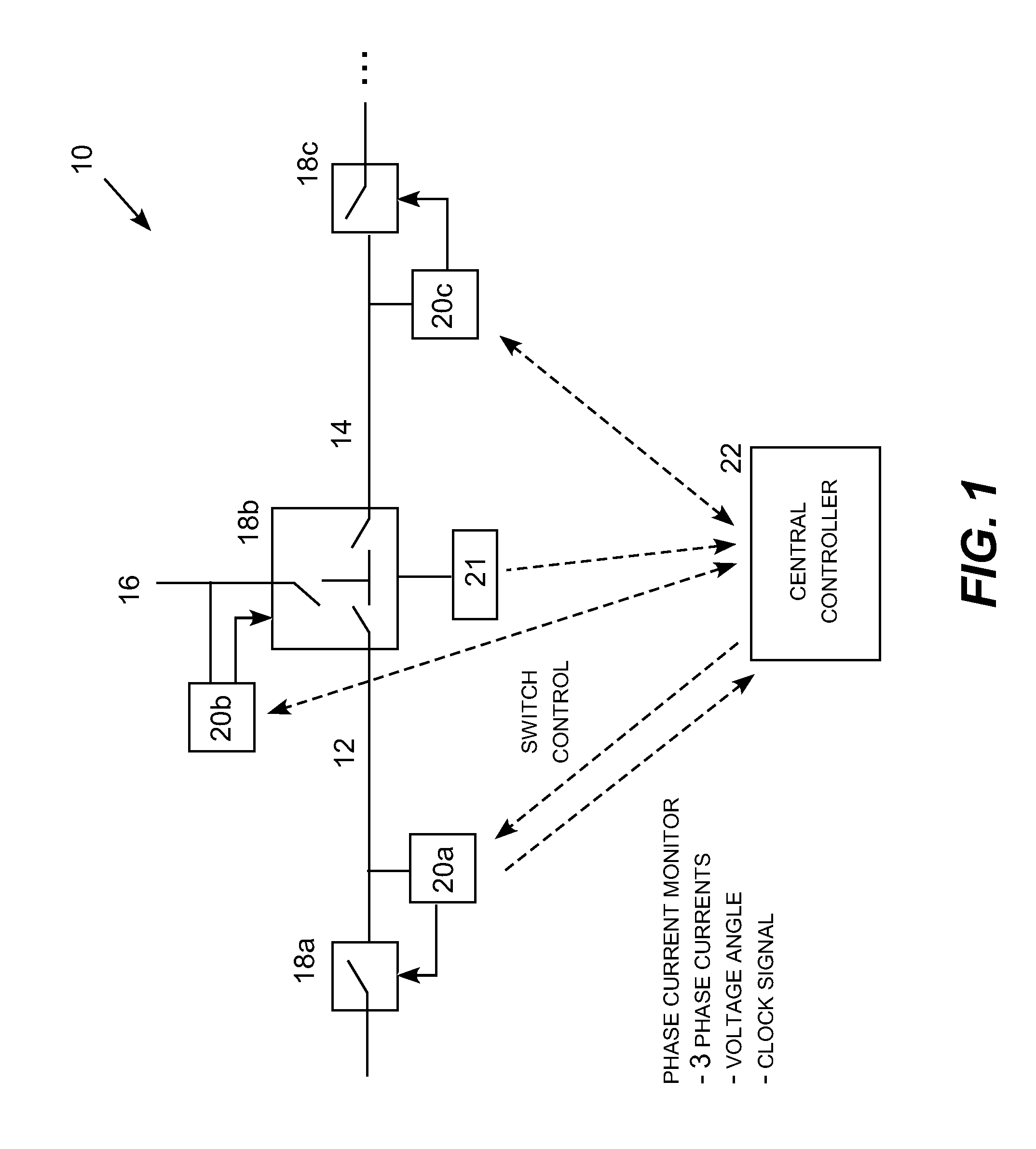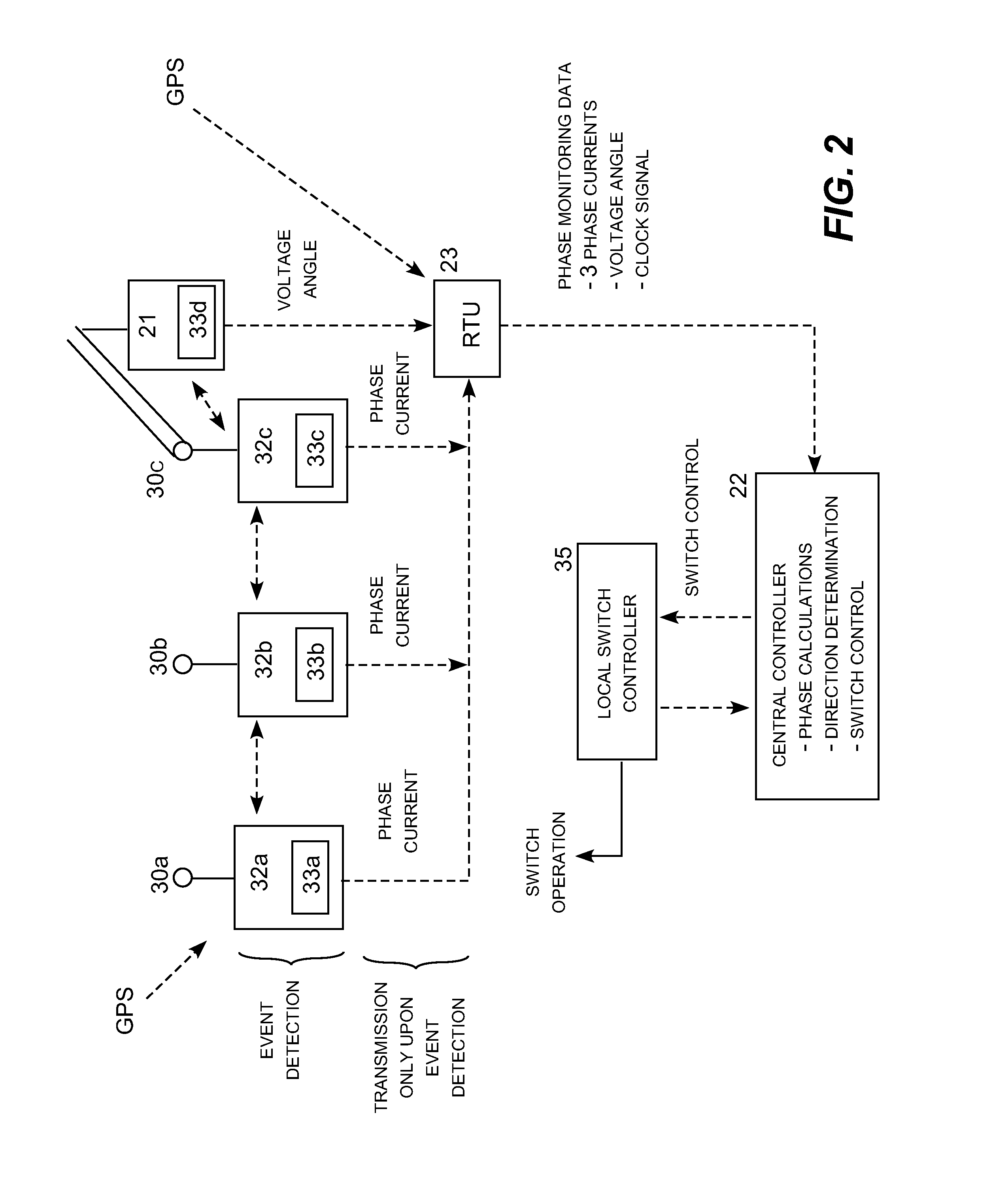Fault detection and isolation using a common reference clock
a common reference clock and fault detection technology, applied in the field of electric power systems, can solve the problems of low-current faults, ineffective detection of high-impedance, low-current faults, etc., and achieve the effect of only detecting high-current fault events and reporting them with conventional fci technologies
- Summary
- Abstract
- Description
- Claims
- Application Information
AI Technical Summary
Benefits of technology
Problems solved by technology
Method used
Image
Examples
Embodiment Construction
[0025]The present invention may be embodied in a fault detection and isolation system for distribution electric power lines utilizing a remote reference voltage signal, multiple three-phase current monitors producing asynchronous event data, and a common reference clock. Specific techniques for detecting the presence of high-impedance faults using simultaneous three-phase current monitors are described in U.S. Pat. No. 8,717,721; specific techniques for determining the direction to the fault from the sequenced currents are described in U.S. patent application Ser. No. 13 / 229,808; and specific techniques for sectionalizing the distribution network to isolate detected faults are described in U.S. Pat. No. 8,659,862, which are incorporated by reference. U.S. patent application Ser. No. 13 / 864,611, which is also incorporated by reference, describes a high-impedance fault detection system utilizing local current monitors and a local voltage angle detector.
[0026]While the techniques descr...
PUM
 Login to View More
Login to View More Abstract
Description
Claims
Application Information
 Login to View More
Login to View More - R&D
- Intellectual Property
- Life Sciences
- Materials
- Tech Scout
- Unparalleled Data Quality
- Higher Quality Content
- 60% Fewer Hallucinations
Browse by: Latest US Patents, China's latest patents, Technical Efficacy Thesaurus, Application Domain, Technology Topic, Popular Technical Reports.
© 2025 PatSnap. All rights reserved.Legal|Privacy policy|Modern Slavery Act Transparency Statement|Sitemap|About US| Contact US: help@patsnap.com



